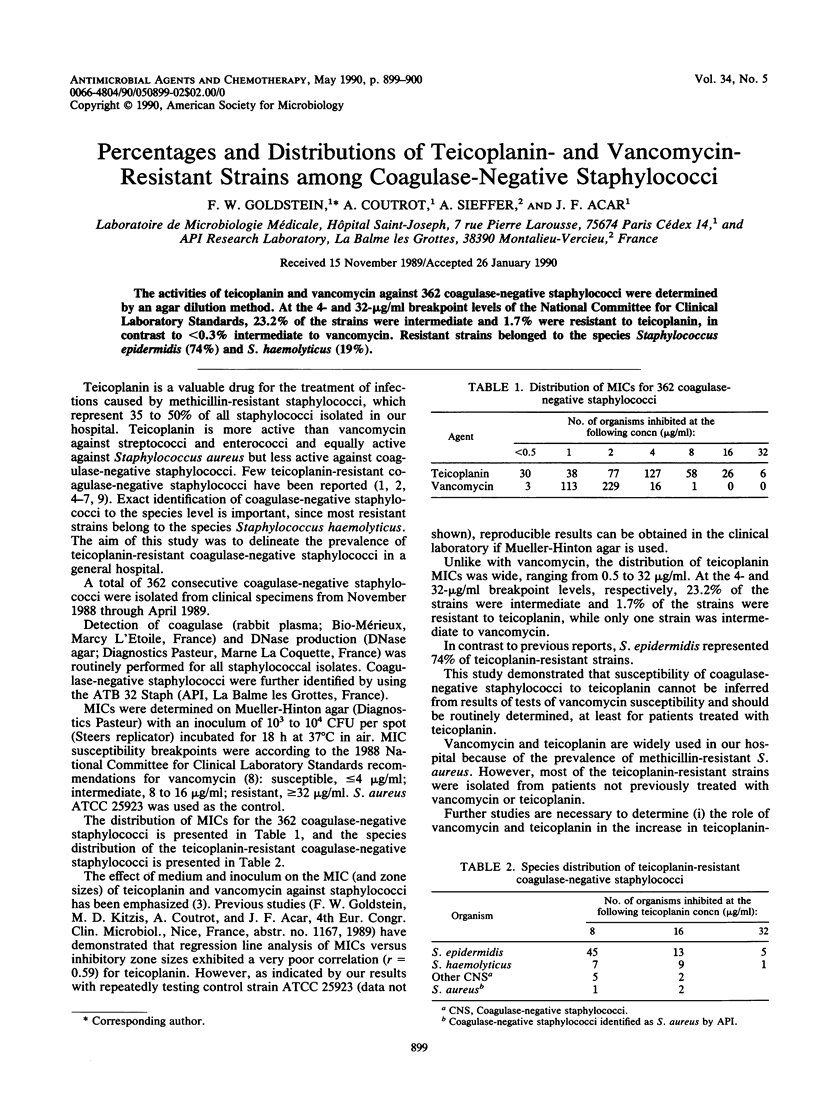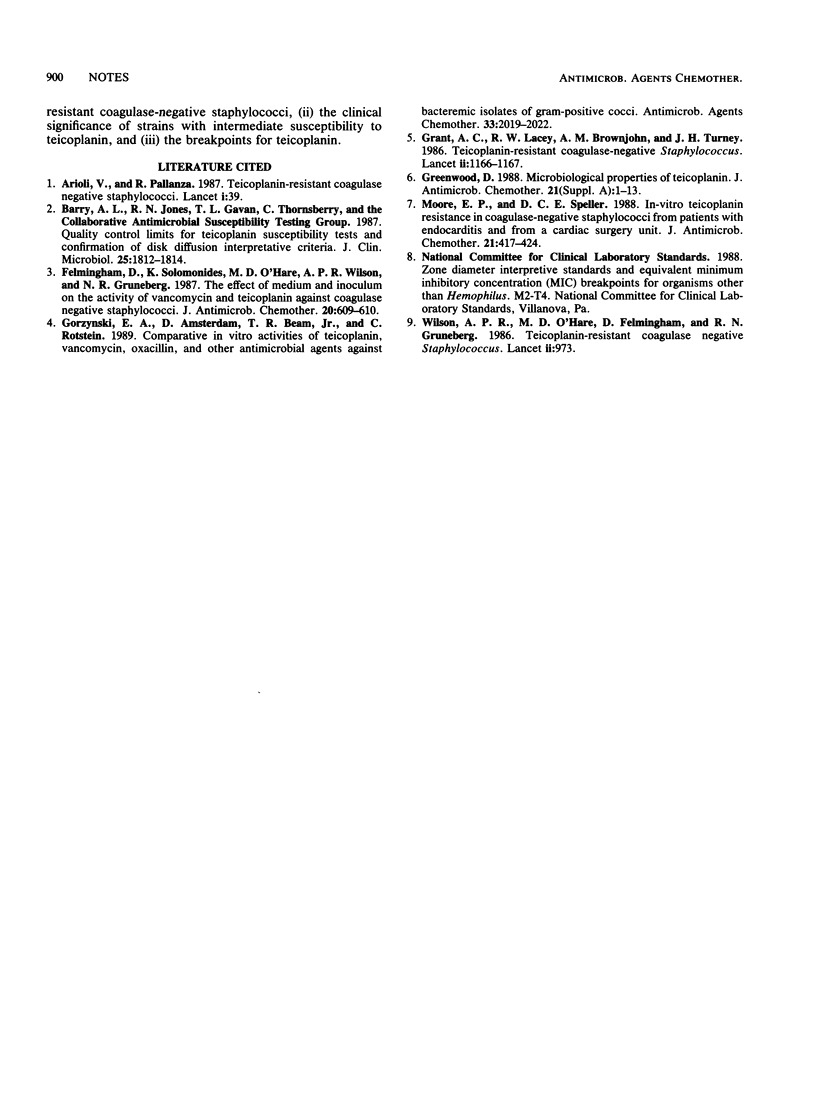Abstract
The activities of teicoplanin and vancomycin against 362 coagulase-negative staphylococci were determined by an agar dilution method. At the 4- and 32-micrograms/ml breakpoint levels of the National Committee for Clinical Laboratory Standards, 23.2% of the strains were intermediate and 1.7% were resistant to teicoplanin, in contrast to less than 0.3% intermediate to vancomycin. Resistant strains belonged to the species Staphylococcus epidermidis (74%) and S. haemolyticus (19%).
Full text
PDF

Selected References
These references are in PubMed. This may not be the complete list of references from this article.
- Arioli V., Pallanza R. Teicoplanin-resistant coagulase-negative staphylococci. Lancet. 1987 Jan 3;1(8523):39–39. doi: 10.1016/s0140-6736(87)90724-0. [DOI] [PubMed] [Google Scholar]
- Barry A. L., Jones R. N., Gavan T. L., Thornsberry C. Quality control limits for teicoplanin susceptibility tests and confirmation of disk diffusion interpretive criteria. J Clin Microbiol. 1987 Sep;25(9):1812–1814. doi: 10.1128/jcm.25.9.1812-1814.1987. [DOI] [PMC free article] [PubMed] [Google Scholar]
- Felmingham D., Solomonides K., O'Hare M. D., Wilson A. P., Grüneberg R. N. The effect of medium and inoculum on the activity of vancomycin and teicoplanin against coagulase-negative staphylococci. J Antimicrob Chemother. 1987 Oct;20(4):609–610. doi: 10.1093/jac/20.4.609. [DOI] [PubMed] [Google Scholar]
- Gorzynski E. A., Amsterdam D., Beam T. R., Jr, Rotstein C. Comparative in vitro activities of teicoplanin, vancomycin, oxacillin, and other antimicrobial agents against bacteremic isolates of gram-positive cocci. Antimicrob Agents Chemother. 1989 Nov;33(11):2019–2022. doi: 10.1128/aac.33.11.2019. [DOI] [PMC free article] [PubMed] [Google Scholar]
- Grant A. C., Lacey R. W., Brownjohn A. M., Turney J. H. Teicoplanin-resistant coagulase-negative staphylococcus. Lancet. 1986 Nov 15;2(8516):1166–1167. doi: 10.1016/s0140-6736(86)90580-5. [DOI] [PubMed] [Google Scholar]
- Greenwood D. Microbiological properties of teicoplanin. J Antimicrob Chemother. 1988 Jan;21 (Suppl A):1–13. doi: 10.1093/jac/21.suppl_a.1. [DOI] [PubMed] [Google Scholar]
- Moore E. P., Speller D. C. In-vitro teicoplanin-resistance in coagulase-negative staphylococci from patients with endocarditis and from a cardiac surgery unit. J Antimicrob Chemother. 1988 Apr;21(4):417–424. doi: 10.1093/jac/21.4.417. [DOI] [PubMed] [Google Scholar]
- Wilson A. P., O'Hare M. D., Felmingham D., Grüneberg R. N. Teicoplanin-resistant coagulase-negative staphylococcus. Lancet. 1986 Oct 25;2(8513):973–973. doi: 10.1016/s0140-6736(86)90622-7. [DOI] [PubMed] [Google Scholar]


